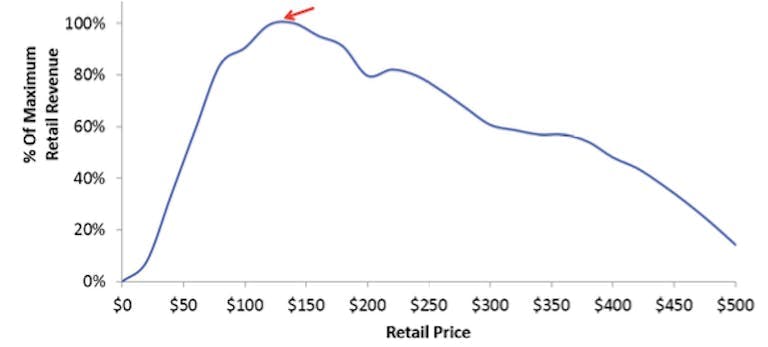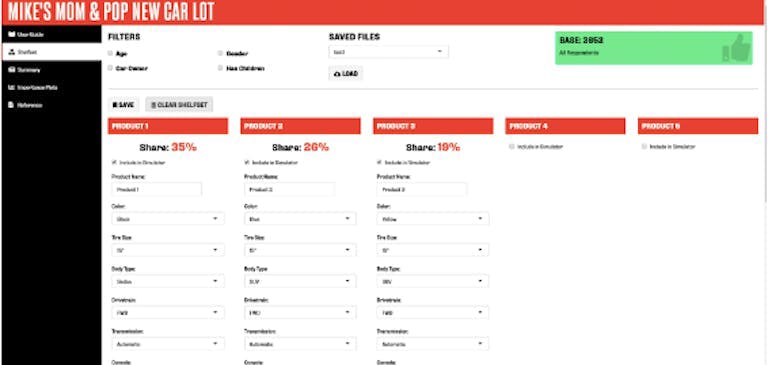Setting a Price that Balances Returning a Profit and Being Appealing to Consumers
When it comes to the design of new product offerings, one of the most critical pieces to get right is the price. Companies must balance between setting a price that is going to return a profit and also be appealing to consumers. Set a price that is too high, and consumers will shy away from purchasing, perhaps purchasing a competitor’s product instead! However, set a price too low and you could be leaving money on the table. Conducting research to examine the effects of pricing is critical to the success of a new product launch. Big Village has many techniques to examine pricing and offer insights to companies on what price will balance profit and consumer appeal.
One of the simplest ways to examine price is to conduct a survey where respondents are asked about the appeal of a product and purchase intent at a certain price. Respondents are broken into cells that are exposed to a product concept that is priced at one of a handful of price points. By looking across cells of respondents we can gauge the effect of price on the product. In an approach like this, a simple comparison of statistics will tell you how respondents react to changes in price.
The limitation of this approach, however, is that we only get a read on price points that we are explicitly ask about in the survey. There could be a price that lies between the tested price points that would maximize appeal. This approach is only recommended for companies that already have a relatively firm idea of where they want to price their product and just want to test a small number of potential price points to verify their hypothesis about price.
When companies are not sure what price to set, such as a new product innovation that is new to the marketplace, more complex techniques can offer the needed flexibility and insight. One of these techniques is a Van Westendorp Newton-Miller-Smith (Van Westendorp N-M-S) analysis. The Van Westendorp N-M-S analysis is an expansion to the classic Van Westendorp analysis first devised in 1976 by Dutch economist Peter van Westendorp. Van Westendorp analysis takes a nuanced view of price that recognizes there are not only levels of pricing that are too high for consumers, but there are levels of pricing where consumers would start to question the quality of the product and thus refrain from purchasing.
Van Westendorp N-M-S analysis comprises a series of 6 questions about a product concept. The first 4 questions in the series are from the traditional Van Westendorp analysis. The Van Westendorp N-M-S adds 2 questions that ask purchase intent at the price in which a respondent noted the product as being expensive but acceptable, and the price in which a respondent would find the product a bargain.
By looking across the answers to these 6 questions, Big Village can produce charts that show the price point that will maximize consideration, revenue potential, and/or profit potential. These various price points offer companies different strategies to go to market. If they are looking to break into the market and capture the largest market share possible, the price point that maximizes consideration would be the ideal price; however, if they are looking to maximize revenue another price point may be preferred.
In the below example, focusing on maximizing consideration would yield an ideal price of $80.

However, selling fewer items for more money can often result in more revenue, and if the company is looking to maximize revenue, a price of $140 would be preferred.

Van Westendorp N-M-S is a great technique to determine price using a variety of strategies; however, it requires the company to have a set concept of what the product is going to be, and that the product is evaluated without any consideration competitors.
What happens when a company has several different ideas of how to design their product? What is the ideal price when we include other products in the marketplace available for purchase? Big Village can answer these questions as well! Conjoint analysis is a great tool to examine not only price, but many different features of a product.
In a conjoint analysis Big Village works with a client to create a grid of various aspects of a product in order to learn about the appeal of products in different configurations. These aspects can be a wide variety of product features such as brand, price, product capability, aesthetics, or a variety of other features. Each respondent is exposed to a series of scenarios containing different product configurations, much like a real market purchasing situation, and is asked to select their most preferred configuration or none.
These selections are used to generate the importance of each attribute being tested such as brand, the utility of each level in an attribute (brand A, brand B, Brand C, etc), and allows Big Village to determine the share of preference in customers on simulated shelf sets. With this information, Big Village is armed with a powerful tool that can answer complex questions such as how much more or less consumers would be willing to pay for a product if it were offered in black instead of blue. We can test scenarios such as what happens if a competitor reduces their prices in response to the new product offering. Or simulations can be run to see what a product’s share of preference would be at different price points to generate a price sensitivity curve that accounts for competition. Conjoint is a versatile analysis that produces models that answer a wide range of questions beyond just pricing.
To further arm clients with the information they need, Big Village can create a web-hosted simulator from the conjoint analysis and give clients the ability to simulate their own shelf sets. This allows clients to explore all the various combinations of product configurations as they work through product development in a simple to use interface.

As we can see, there are a multitude of techniques that a company may leverage when they want to learn about pricing a product. The ideal technique to examine pricing will be different depending on where the company is in product development; however, no matter where in the journey you are, Big Village offers expertise in pricing analysis that can provide insightful and actionable information to help set prices.
Written by Tyler Dugan, Analyst at Big Village Insights.

